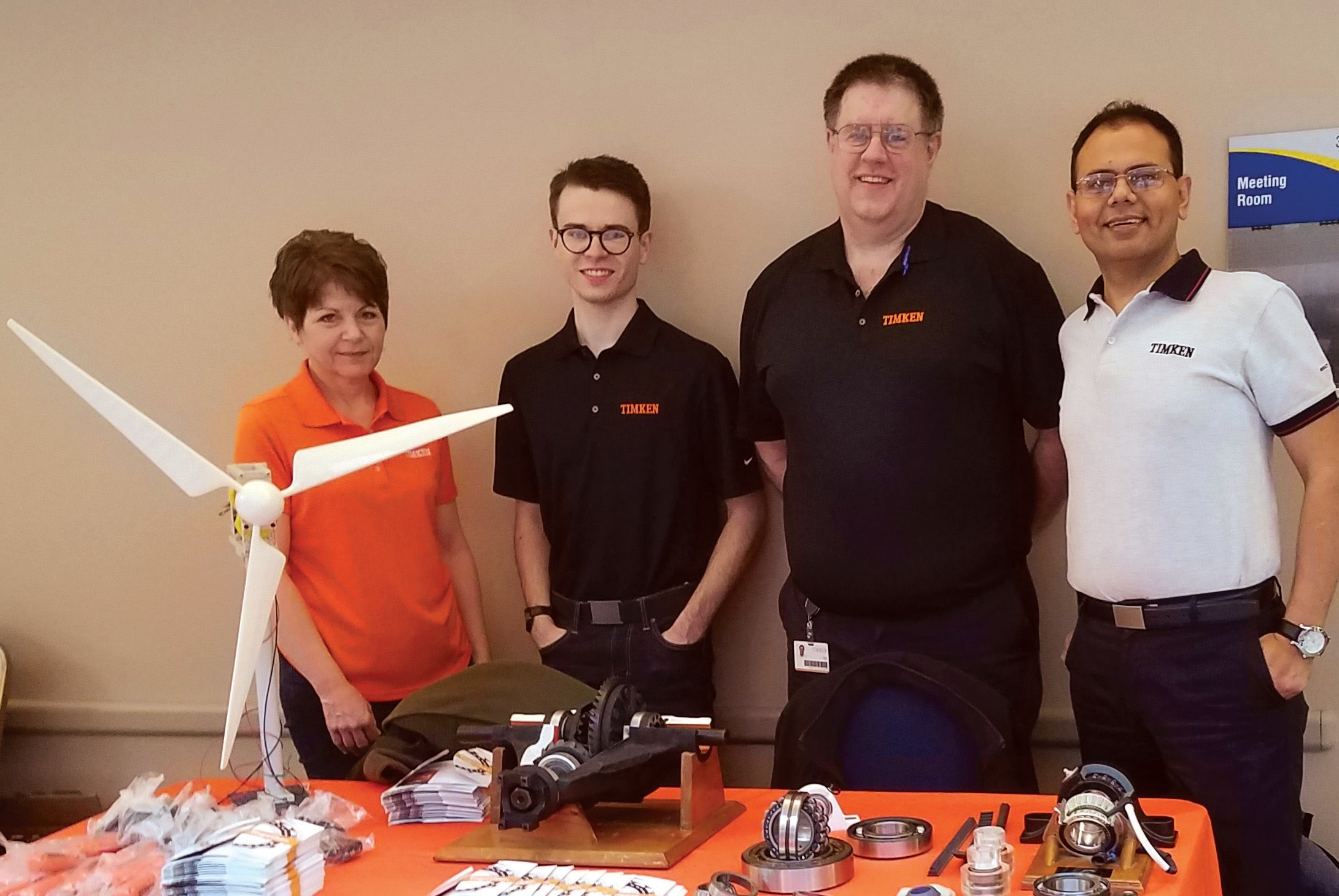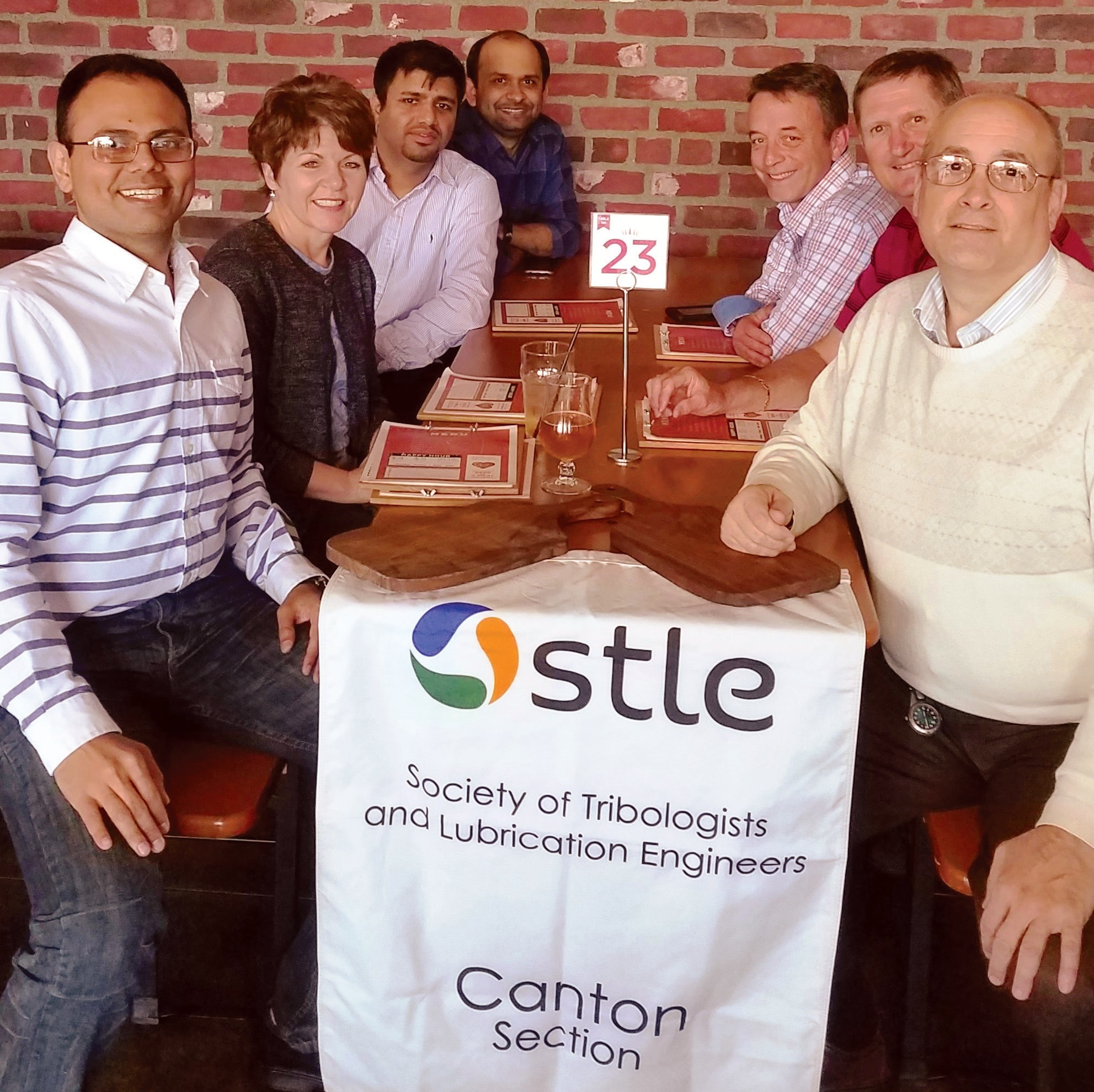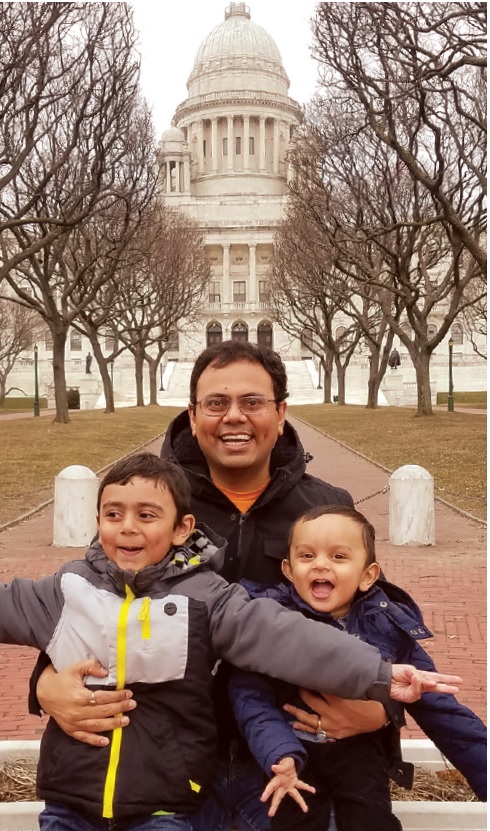TLT: What inspired you to work in the bearing industry?
Mistry: With my background in mechanical engineering, the bearing industry is a great fit since tribology is one of the core competency of Timken’s, and antifriction bearings are one of our key products. Moreover, bearings are in the middle of virtually every engineering market, from aerospace to industrial to automotive, and are the basis of Timken’s technical partnerships with end-users, OEMs and lubricant formulators. Timken not only has easy access to experts in materials R&D, manufacturing R&D, advanced modeling, design, service and process engineering, it has state-of-the-art R&D fixed assets such as bench test capabilities, life testing, application testing, lubricant testing and surface characterization, all of which help facilitate an enabling environment for product development.
My role is very dynamic. For various applications I lead and support bearing lubrication projects, including product development and problem solving, with various Timken cross-functional teams. This is done with the help of lubricant suppliers to support Timken customers and Timken’s customer engineering (technical sales) division.
TLT: Why are synthetics playing an increasingly important role in lubrication engineering?
Mistry: Synthetic oils are artificially made as opposed to naturally occurring petroleum fluids. Chemically engineered synthetic oils have uniform molecular chains and highly stable chemical compositions. Synthetic oil types include polyalphaolefins, diesters, polyol esters, alkylbenzenes, polyalkylene glycols, phosphate esters, silicones and halogenated hydrocarbons. These oils are increasingly prevalent in synthetic and synthetic blend products for industrial and automotive applications.
Synthetic oils cost more than petroleum oils and usually have some lubricant-related properties that are good or excellent, but they are not necessarily strong in all performance categories. Their more beneficial properties often include greater high-temperature stability and oxidation resistance, wider temperature operating ranges and improved energy efficiency. For some applications, they can significantly contribute to fuel efficiency. Synthetic oil uses include lubricants for gears, bearings, engines, hydraulic systems, greases, compressors and refrigeration systems, although petroleum oils tend to dominate these applications.
OEMs and government regulations are essentially influencing synthetics to play an increasingly important role in lubrication engineering, as OEMs are driving the trend toward synthetic lubricants in engine and power train applications as well as in some industrial applications. Governments are increasingly pressuring OEMs to create more energy- and environmentally friendly equipment, while consumers are demanding more powerful and reliable equipment.
The advanced designs of OEMs (equipment design with much higher power density) require advancements in lubricants to enable these new engines, power trains and equipment to operate at their peak efficiency for the life of the equipment. Thus, OEMs have collaborated with lubricant formulators to develop tailored products for these new applications and have promoted more stringent lubricant standards through industry bodies.
 Kuldeep Mistry and associates at a Timken-sponsored STEM camp at the University of Akron. The event was spearheaded by STLE’s Canton Section.
Kuldeep Mistry and associates at a Timken-sponsored STEM camp at the University of Akron. The event was spearheaded by STLE’s Canton Section.
TLT: How is electrification evolving, and what are its implications?
Mistry: More and more, countries and cities around the world are enacting stricter regulations on fossil fuel vehicles. One market report (
see References) suggests that electric commercial vehicles (CVs) produced globally will exceed 1.8 million units by 2025―more than a fourteen-fold growth in eight years.
Moreover, electric and hybrid vehicle powertrains are considerably different from traditional powertrains. Electric CV bearings operate under extreme heat with lighter-viscosity synthetic lubricants, so the impact on bearing life and performance can be quite significant. The smaller, lighter Timken ePDFE (“electric” power-dense, fuel-efficient) bearings present automakers with the opportunity to reduce the overall size of the powertrain and add weight back into more value-added areas such as the battery. After accounting for bearing materials, internal geometries and surface finishes, Timken can improve relative life to ~90% of the 75W-140 oil, achieving both higher efficiency and suitable life requirements.
 Kuldeep Mistry with the STLE Canton Section Executive Committee. The revitalized section won STLE’s Outstanding Section award in 2016, 2017 and 2019.
TLT: What do you consider to be the most challenging issue for synthetics within electric car technology?
Mistry:
Kuldeep Mistry with the STLE Canton Section Executive Committee. The revitalized section won STLE’s Outstanding Section award in 2016, 2017 and 2019.
TLT: What do you consider to be the most challenging issue for synthetics within electric car technology?
Mistry: The electrification is disrupting both the light and commercial vehicle markets. In comparison to the basic architecture of conventional powertrains, hybrid vehicles have the complete mechanical powertrain, to which an electric motor is added as an alternate propulsion source. A full electric powertrain still utilizes axles and a differential to supply power to the wheels.
However, since the electric motor can supply power at various speed ranges, the transmission becomes a more compact gear system that operates at a wider and higher speed range. Notably, higher speeds increase power loss exponentially, driving the need for more efficient bearings. Thus, a fundamental understanding is essential for electric vehicle OEMs that utilize low-viscosity synthetic lubricants.
Moreover, electric CVs present new challenges, particularly for bearings that operate under extreme conditions. The greases have varying torque properties, and proper grease selection can further add to fuel efficiency. The selection of synthetic base oils, thickeners and additives adds up to long life, high efficiency and less noise; they also provide compatibility with various polymers and plastics, copper wires and other materials.
Many factors contribute to power loss, from bearings to seals to oil viscosity. Heat generation in the electric motors is a typical result of power loss. This power loss increases the transmission temperature, so lowering this temperature helps drive efficiency. Thus, to lower the heat generation, high-performance electric motors require a different approach to selecting a grease. It is desirable to have greases with high oxidation resistance when operating under extreme conditions.
 Kuldeep Mistry with sons Hrehaan (left) and Kushaan at the Rhode Island State House.
TLT: How did you get involved with STLE? What advice do you have for new people in the industry?
Mistry:
Kuldeep Mistry with sons Hrehaan (left) and Kushaan at the Rhode Island State House.
TLT: How did you get involved with STLE? What advice do you have for new people in the industry?
Mistry: For tribology or lubrication students, engineers and researchers, I highly recommend getting involved with STLE because of the excellent value it offers. I was strongly encouraged to attend STLE annual meetings by 2015 STLE President Martin Webster (EMRE), the industrial sponsor of my doctoral studies.
I became an STLE member in 2008 and attended my first annual meeting in Cleveland, Ohio. I was completely mesmerized by a meeting that not only gave me the opportunity to present my studies to esteemed tribology researchers but also was a great forum to network―both formally and informally. My involvement with STLE led to a job at Argonne National Laboratory where I had the prestigious opportunity to work with 2016 STLE President Ali Erdemir (ANL) on Department of Energy-funded projects.
In 2009 I relocated to the Chicago area and came across a very inclusive STLE Chicago Section that helped me build a local network that greatly supported my assigned tribology projects. In 2012 I was looking for an opportunity to lead industrial tribology projects, and Dr. Ryan D. Evans (Timken), STLE’s current treasurer, helped me navigate my desired career path. Again, my interaction with STLE led to a job, this time with The Timken Co. In 2013 I began working on the real-world tribology projects that overlapped Timken’s and my interest areas.
As of 2015 STLE’s Canton Section had been inactive for almost five years, and I found myself intensely desiring an opportunity to network locally. So I began revamping the Canton Section by encouraging interest among tribology students, engineers and researchers. This gave me tremendous opportunities for professional development and also attracted a good deal of positive attention from the northeast Ohio region with our well-attended meetings and education seminars on carefully chosen, diverse topics. STLE’s Canton Section received high visibility, and as a chair it was a great honor to receive the STLE Outstanding Section Award for two consecutive years in 2016 and 2017 for excellent teamwork.
These fantastic outcomes led the Canton Section to initiate new programs such as local scholarships, sponsorships and STEM activities. Those additional efforts again led to heartwarming contributions and helped the Canton Section receive STLE’s Outstanding Section Award a third time in 2019 since its revamp.
Last year I was selected to serve on STLE’s board of directors, and I am very grateful to STLE for providing so many opportunities to contribute to the betterment of an organization that not only aided my professional development but also helped me build my professional network.
More than half of new positions are found through networking; I truly believe networking should begin long before you start a job search. Networking is an ongoing process of communicating with others for ideas, information, interests and career goals. STLE is a great platform for networking through local section meetings, annual meetings, committee meetings, volunteering opportunities, etc. STLE’s platform can build your network and assist your career by giving you opportunities to stay in contact with your peers for the respectful and mutual exchange of ideas.
I have enjoyed my STLE experience. STLE is where I met many friends, developed my professional network, heard about job opportunities and learned new things along the way. For 75 years STLE has been a great organization built on the foundation of excellent volunteers. I encourage everyone to get involved at whatever level, topic or interest.
REFERENCES
•
Lubrication Challenges within the Wind Industry. March 27th, 2019. STLE Wind Tribology webinar series. For the webinar recording, click
here. For the TLT article, click
here.
•
Mistry, K., Lucas, D. and Shiller, P. (Mar-Apr 2019), “Grease Selection for Mainshaft Bearing in Wind Turbines: Connecting Field Trial Results to Application Testing,”
The NLGI Spokesman, pg. 26-33. Available
here.
•
Racing wheel bearing lubrication. Available
here.
•
Blasko, D., Aindow, D. and Mistry, K., The Timken Co., Canton, Ohio, Enhancements in the Performance of Journal Bearing Grease, Technical Publication. JRC2019-1302, ASME 2019 Joint Rail Conference.
•
Available
here.
•
Available
here.
•
Available
here.
You can reach Kuldeep Mistry at kuldeep.mistry@timken.com.